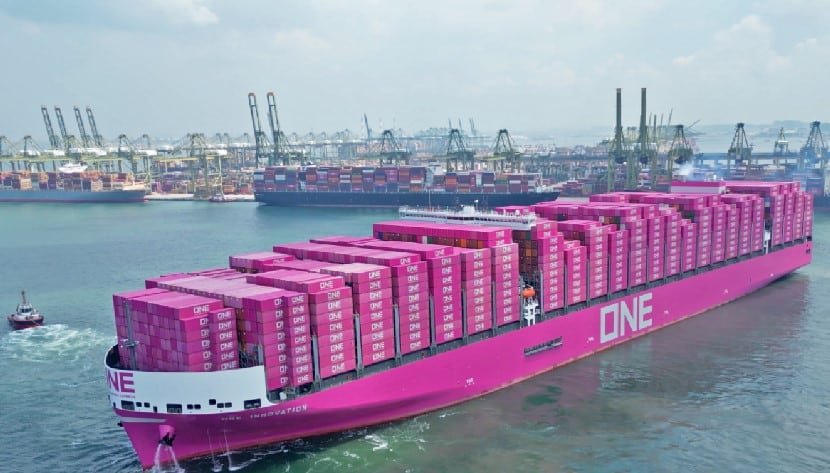Container Shipping Faces Conflicting Signals

Container shipping is currently navigating a complex landscape marked by contrasting trends. While time charter rates have reached unprecedented highs outside the COVID-19 pandemic, spot rates have been in a steady decline for nine consecutive weeks. This duality is further complicated by global shipping lines, with one raising its full-year forecast and another lowering its financial projections for 2025.
Stable Charter Rates Amid Declining Spot Market
The Containership Timecharter Rate Index, managed by Clarksons Research, remains robust at 198 points, the highest level recorded outside the COVID-19 era. Analysts from Hamburg’s New ConTex, which tracks container time charters, report that rates across all segments are holding steady, indicating a healthy market. Broker Braemar noted that despite the summer season, the charter market is resilient, with stable rates and a decent level of activity across most segments.
Technological developments key to reducing maritime sector emissions, finds new DNV report
In stark contrast, the spot market has been experiencing a prolonged downturn. The Shanghai Containerised Freight Index fell by 4% last week, marking its ninth consecutive week of decline and bringing it down to 1,490 points—60% lower than the peaks observed last summer. Notably, rates for transpacific eastbound shipments have reverted to levels seen before the Red Sea rerouting, highlighting the volatility in the market.
Mixed Forecasts from Major Shipping Lines
In a surprising turn, Maersk, the world’s second-largest container shipping line, raised its full-year forecast last week, citing stronger-than-expected container demand amid ongoing trade tensions. The company now anticipates an EBITDA of $8 billion to $9.5 billion for 2025, up from the previous estimate of $6 billion to $9 billion. CEO Vincent Clerc emphasized the resilience of demand despite market volatility and uncertainty in global trade.
Conversely, Japan’s Ocean Network Express (ONE), the sixth-largest liner globally, has taken a more cautious approach. Earlier this month, the company slashed its full-year forecast by $400 million, with CEO Jeremy Nixon attributing the revision to persistent geopolitical and economic challenges.
The shipping industry is grappling with significant overcapacity, as the global fleet size has surged from a baseline of 100 in 2019 to 145 points, according to data from Xeneta. Meanwhile, global container shipping demand has only risen from 100 to 113 points during the same period. Analysts warn that carriers face immense challenges in preventing further declines in freight rates, with excess supply expected to persist through 2029.
